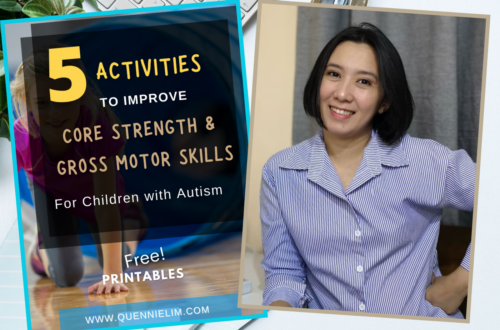How to Deal with Change in Autism

How to Deal with Change in Autism
Hey there!
Life is full of surprises and changes, and for folks on the autism spectrum, dealing with these transitions can be a bit trickier. Autism brings unique challenges when it comes to adapting to new situations. But fear not! In this blog, we’ll explore some cool tips and tricks on how to handle change like a champ, autism style!
Tip 1: Embrace Predictability
Embrace Predictability (But Not Too Much!): Okay, we know that routine is like a comforting blanket for people with autism. It provides stability and a sense of control. So, when change is on the horizon, try to introduce predictability wherever possible. Use visual schedules, calendars, or even sticky notes to communicate upcoming changes. This way, you can mentally prepare yourself and reduce anxiety. But hey, remember that change can also be exciting! So, don’t be afraid to step outside your comfort zone and embrace new adventures. Just be prepared for the consequences and plan for your child’s positive or negative reaction!
Tip 2: Baby Steps, Baby Steps!
Baby Steps, Baby Steps: Big changes can feel overwhelming, right? Well, why not break them down into smaller, more manageable steps? Take transitioning to a new school, for example. Instead of diving headfirst into the unknown, start by visiting the campus before the first day! Get familiar with the surroundings, meet the teachers, and check out the classrooms. Or, you can also show pictures of the facilities of the school and show your child his new school. This gradual exposure helps you ease into the change, reducing stress and making the transition smoother.
Tip 3: Use Visual Supports!
Visualize Your Way to Success: Visual aids are like superheroes for dealing with change. Use them to your advantage! Create visual schedules, charts, or checklists to help you understand what’s happening and what’s expected of you. Seeing things in a concrete way can make them feel less abstract and more manageable. And you know what’s even cooler? Making your own superhero-style social stories! Personalize these stories to describe the change you’re facing, step by step. They’ll be your trusty guides through unfamiliar territory.
Tip 4: Promote Flexibility!
Go with the Flow (Even When It Feels Hard): Flexibility is the name of the game when it comes to navigating change. It’s totally okay if it feels challenging at first. But practice makes perfect, my friend! Engage in activities that promote flexibility, like structured playdates or role-playing different scenarios. They’ll help you adapt more easily and develop problem-solving skills. And when things get tough, take a deep breath, practice mindfulness, or try some self-calming techniques. These strategies can help you regulate your emotions and find your center.
Tip 5: Collaboration
Team Up for the Win: Dealing with change doesn’t mean you have to go it alone. Team up with your support squad! Whether it’s your family, teachers, therapists, or friends, let them be your partners in crime. Share your concerns, fears, and excitement with them. Together, you can create a supportive network that understands your needs and can provide guidance and reassurance. Collaboration is key!
Change may seem like a big, scary monster sometimes, but with the right tools and mindset, you can conquer it like a boss.
Remember, predictability and preparation can be your allies, while gradual exposure and visual aids are your trusty sidekicks.
Stay flexible, take it one step at a time, and don’t forget to lean on your support squad when you need them. You’ve got this! Embrace change, and let your awesomeness shine through.
Now that you got 5 tips on how you can help you or your child learn to accept change and develop flexibility issue, I got your downloadable PDF file for you to have!
Grab your files down below for your copy and share it with someone you know to benefit from learning how to handle a child with autism.
Grab it before you forget!




